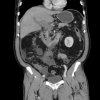[OA] Testosterone and Dihydrotestosterone Reduce Platelet Activation and Reactivity
The cardiovascular effects of testosterone and dihydrotestosterone are generally attributed to their modulatory action on lipid and glucose metabolism. However, no ex vivo studies suggest that circulating androgen levels influence the activation and reactivity of blood platelets - one of the main components of the haemostasis system directly involved in atherosclerosis.
The levels of testosterone, dihydrotestosterone and oestradiol in plasma from men and women aged from 60 to 65 years were measured by LC-MS; the aim was to identify any potential relationships between sex steroid levels and the markers of platelet activation (surface membrane expression of GPII/IIIa complex and P-selectin) and platelet reactivity in response to arachidonate, collagen or ADP, monitored with whole blood aggregometry and flow cytometry.
The results of the ex vivo part of the study indicate that the concentrations of testosterone and its reduced form, dihydrotestosterone are significantly negatively associated with platelet activation and reactivity. These observations were confirmed in an in vitro model: testosterone and dihydrotestosterone significantly inhibited platelet aggregation triggered by arachidonate or collagen.
Our findings indicate that testosterone and dihydrotestosterone are significant haemostatic steroids with inhibitory action on blood platelets in older people.
Karolczak K, Konieczna L, Kostka T, et al. Testosterone and dihydrotestosterone reduce platelet activation and reactivity in older men and women. Aging 2018. Aging
The cardiovascular effects of testosterone and dihydrotestosterone are generally attributed to their modulatory action on lipid and glucose metabolism. However, no ex vivo studies suggest that circulating androgen levels influence the activation and reactivity of blood platelets - one of the main components of the haemostasis system directly involved in atherosclerosis.
The levels of testosterone, dihydrotestosterone and oestradiol in plasma from men and women aged from 60 to 65 years were measured by LC-MS; the aim was to identify any potential relationships between sex steroid levels and the markers of platelet activation (surface membrane expression of GPII/IIIa complex and P-selectin) and platelet reactivity in response to arachidonate, collagen or ADP, monitored with whole blood aggregometry and flow cytometry.
The results of the ex vivo part of the study indicate that the concentrations of testosterone and its reduced form, dihydrotestosterone are significantly negatively associated with platelet activation and reactivity. These observations were confirmed in an in vitro model: testosterone and dihydrotestosterone significantly inhibited platelet aggregation triggered by arachidonate or collagen.
Our findings indicate that testosterone and dihydrotestosterone are significant haemostatic steroids with inhibitory action on blood platelets in older people.
Karolczak K, Konieczna L, Kostka T, et al. Testosterone and dihydrotestosterone reduce platelet activation and reactivity in older men and women. Aging 2018. Aging


